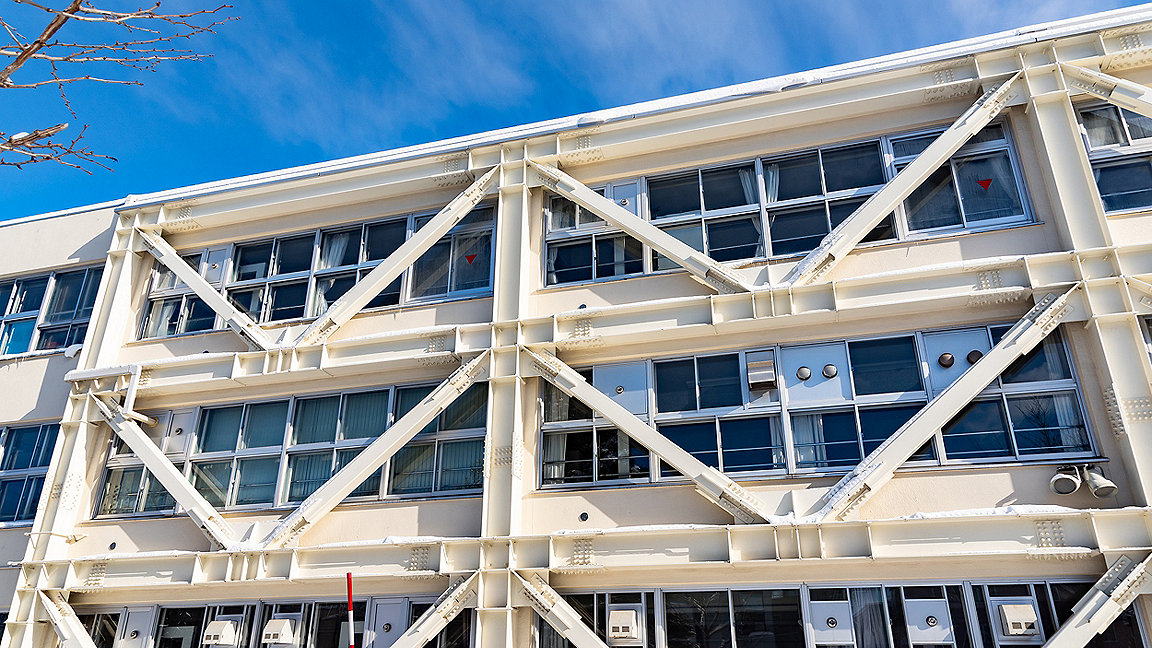
In trying to meet crucial net-zero-carbon targets, improve the market value of assets and increase rental returns on properties, building owners and developers should consider a retrofit-first approach.
Retrofitting involves making necessary improvements and upgrades to existing buildings to enhance their energy efficiency and overall sustainability. By putting this first – prioritising it over demolition and rebuilding – we can exploit the advantages of existing structures, reduce costs and minimise carbon footprints.
That said, whether or not to retrofit should always be decided on a case-by-case basis, as upgrading buildings to modern net-zero-carbon standards may not always be viable.
In adopting retrofit-first and only pursuing other approaches where retrofit is not viable, the UK can work to improve its existing building stock and create a sustainable built environment for the future.
According to the UK government, 80% of the buildings that will be in use in 2050 already exist today. Therefore, it is important that the construction sector looks at ways to adapt these rather than demolish and rebuild them, which would contribute to its already high levels of waste.
The industry has a significant environmental impact, accounting for 38% of global carbon emissions. By embracing sustainability, the sector can mitigate this and contribute to meeting the UK's target for net-zero carbon by 2050.
Moreover, the UK has introduced stricter regulations and standards related to energy efficiency, carbon emissions and sustainable building practices with the June 2022 publication of revised Approved Documents F and L, and new Approved Documents O and S.
The industry needs to fulfil these requirements to avoid penalties and maintain its market relevance. There is also growing market demand for sustainable buildings, as stakeholders including investors, tenants and consumers prioritise environmentally friendly and socially responsible choices.
This makes it more important than ever to adopt a retrofit-first approach.
A retrofit project typically begins with comprehensive surveys to assess the condition of the property, identifying any potential hazards such as asbestos, lead paint or contaminated soil.
This helps determine the scope of work required to enable the building to meet the desired standards. Key considerations during retrofitting include enhancing the insulation rating of its external envelope and installing more efficient services.
Retrofit therefore finds potential to continue using the existing building. It involves retaining at least the building's foundations and frame, and often other components as well. By repurposing and upgrading existing buildings in this way, we avoid the emissions associated with demolishing structures and constructing new ones.
Another attractive reason to retrofit is that it is more cost-effective than constructing new properties from scratch. By factoring in the market rental value for a given area, retrofitting can also improve return on investment.
Retrofitting can offer an alternative to relocation as well. In such cases, several factors must be considered. Adaptability is crucial – can the building be modified to meet the business's current needs?
If physical and design limitations allow, retrofitting can help save cost and carbon. Projects can also be carried out in phases, minimising disruption to ongoing business operations and transforming existing spaces to align with evolving requirements.
To assess the success of a retrofit project, it is important to consider multiple measures. This first is cost per square metre, compared to new-build options and local rental values.
However, it is also crucial to assess the carbon emissions saved by reusing an asset and the potential for long-term sustainability against the way new builds would perform.
The BREEAM rating is a widely recognised measure for sustainable buildings, and can provide a useful benchmark for the success of a retrofit project.
This is a holistic assessment undertaken by independent, licensed assessors using scientifically based sustainability metrics and indices that cover a range of environmental issues.
These include energy and water use, health and well-being, pollution, transport, materials, waste, ecology, and management processes. As a result, the methodology assesses the sustainability of a built asset from multiple perspectives.
Retrofitting also plays a pivotal role in helping the UK meet the Minimum Energy Efficiency Standards (MEES). These require all commercial rental properties in England and Wales to achieve an energy performance certificate (EPC) rating of C or above by 2028.
Retrofit projects can easily incorporate measures to meet this requirement by focusing on building fabric improvements and upgrading services with modern materials and technologies.
Enhancing insulation, installing double or triple glazing, replacing carbon-burning appliances with air-source heat pumps and integrating energy-efficient features such as photovoltaic panels, LED lighting, zonal heating and lighting controls, brise soleil or blinds, and rainwater harvesting all contribute to achieving the desired EPC rating.
'Retrofit projects can meet MEES requirements by focusing on building fabric improvements and upgrading services with modern materials and technologies'
Adopting a retrofit-first approach is thus a practical and effective way to improve UK building stock. By using existing structures, retrofitting offers cost advantages, lowers carbon footprints and enhances market values and rental returns.
With its potential to improve energy efficiency and its long-term environmental benefits, this approach is essential in creating a sustainable built environment for the future.
With the built environment estimated to be responsible for around 40% of global carbon emissions, RICS is championing sustainable practices across the built and natural environment. We are also empowering professionals to embed sustainability considerations into the way they work and better measure environmental impacts.

PROPERTY JOURNAL
Ludmila Simonova 26 April 2024
PROPERTY JOURNAL
Vicky-Jayne Lee MRICS 19 April 2024
PROPERTY JOURNAL
Zhana Lennox MRICS 12 April 2024